
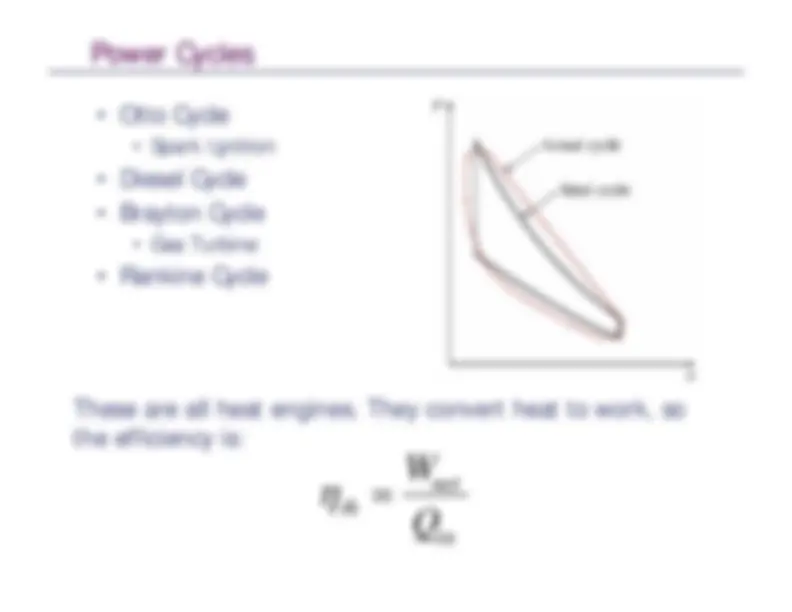
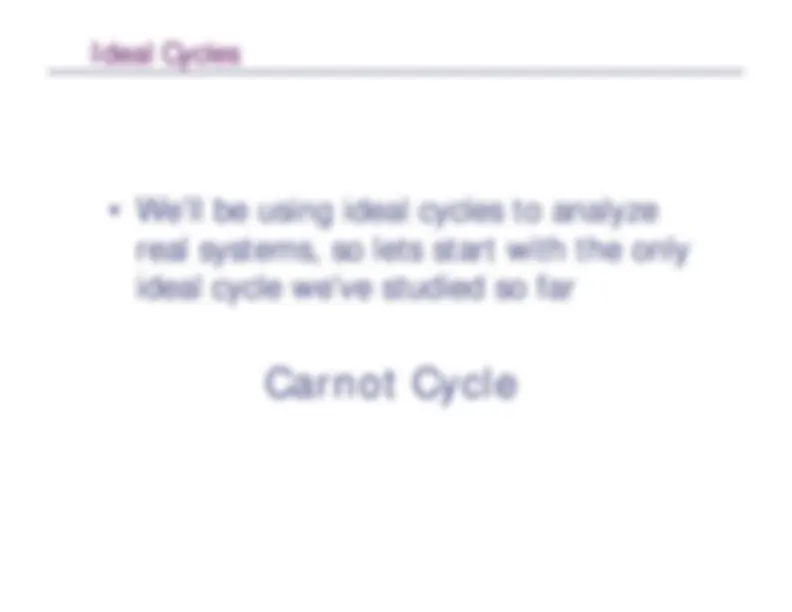
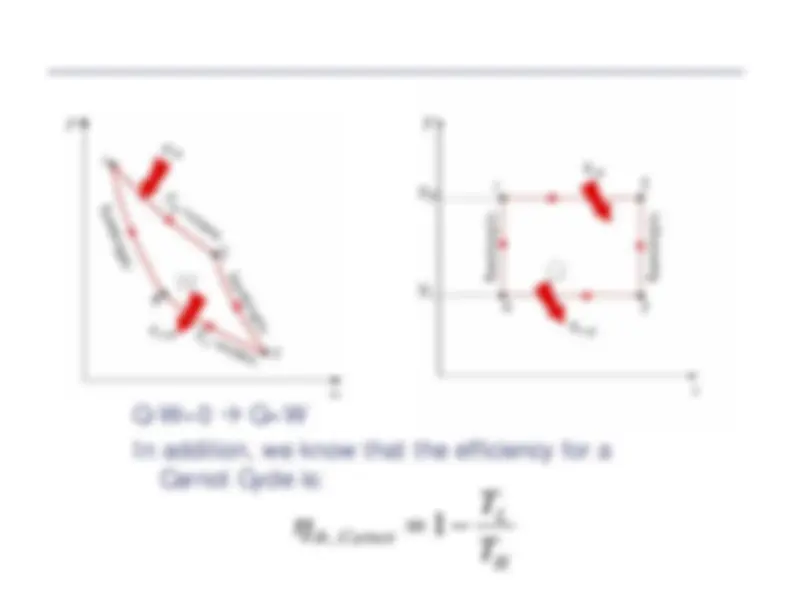
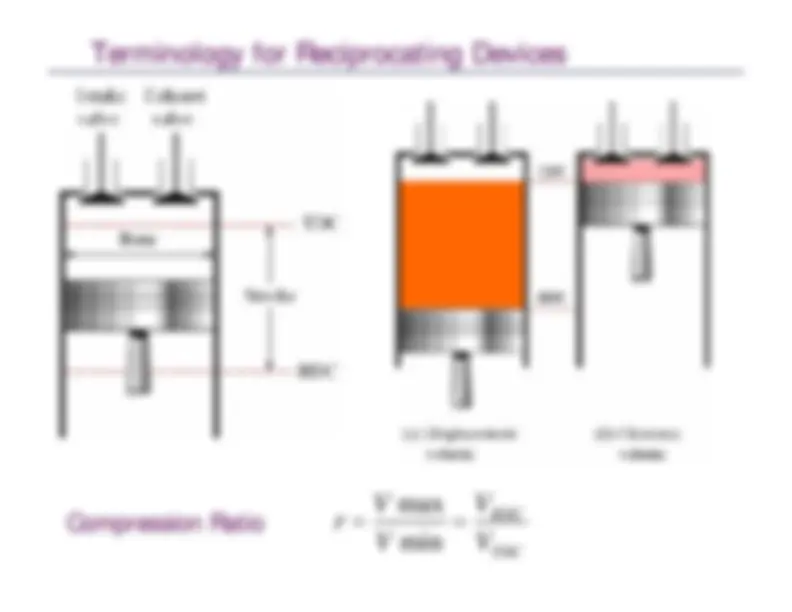
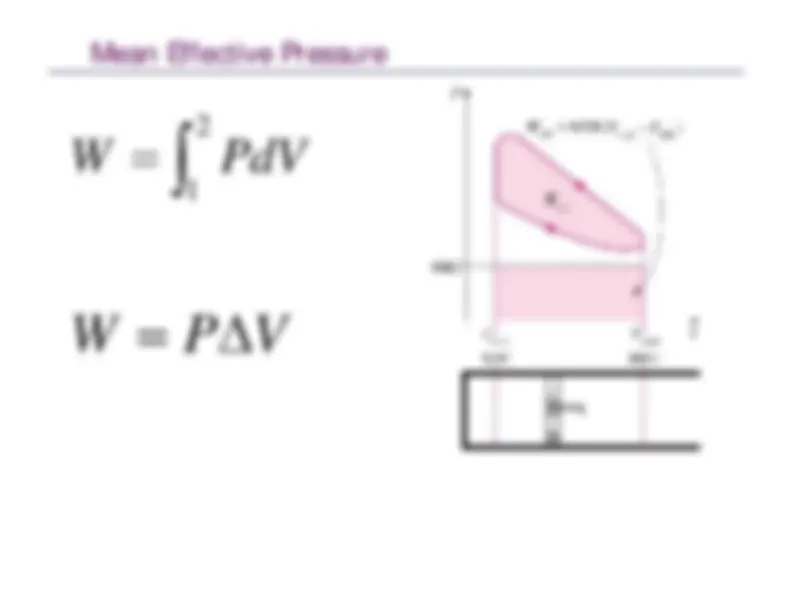
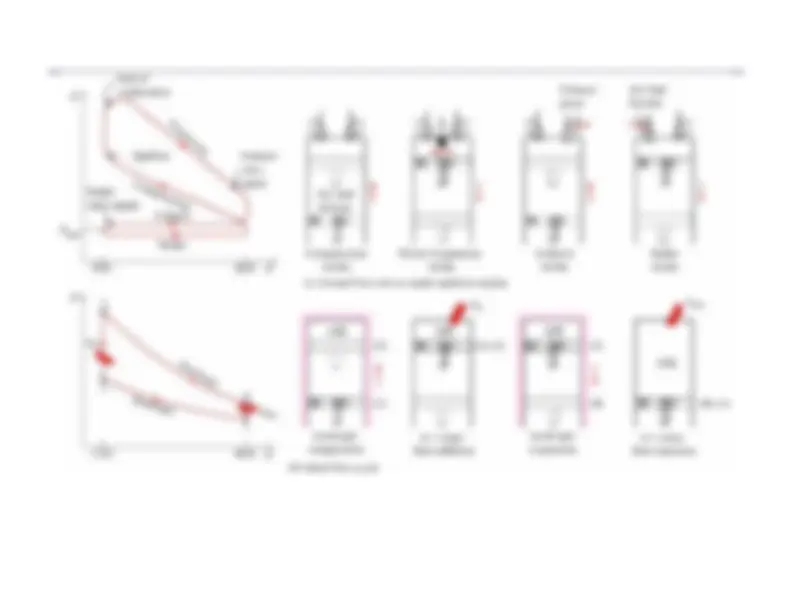
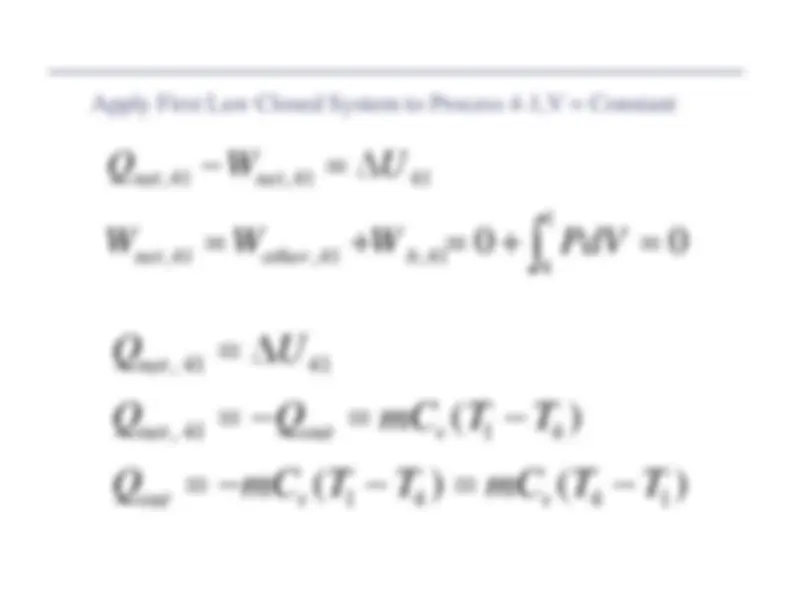
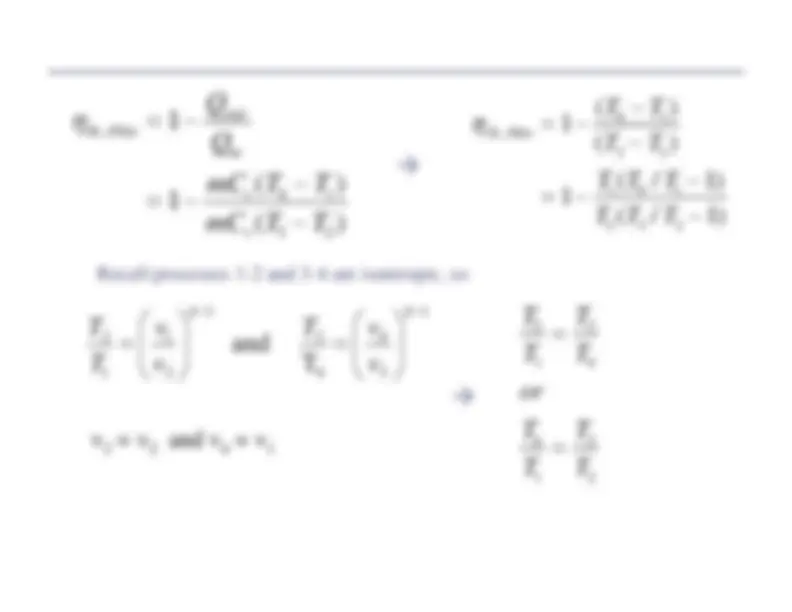
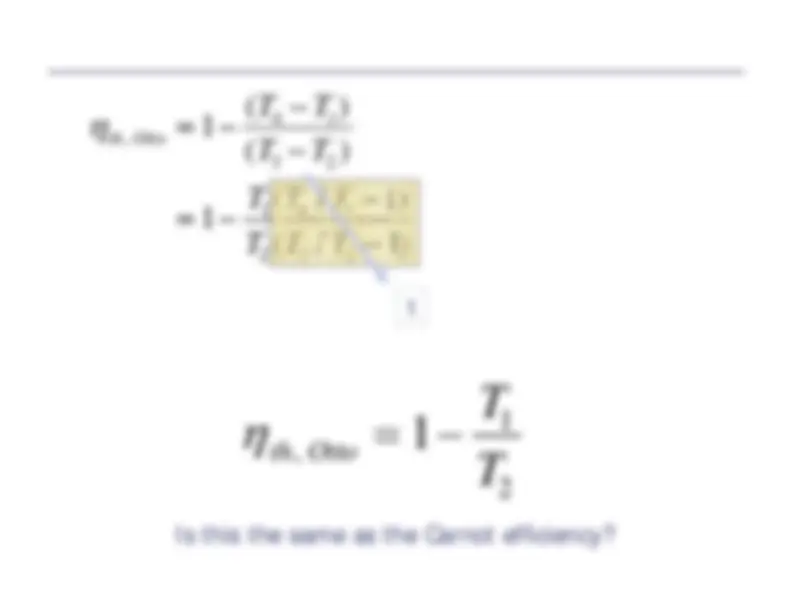
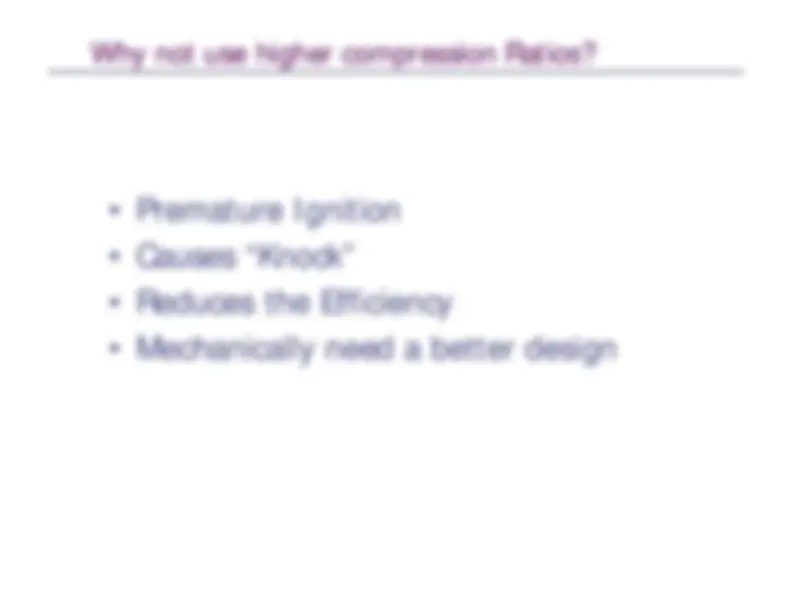
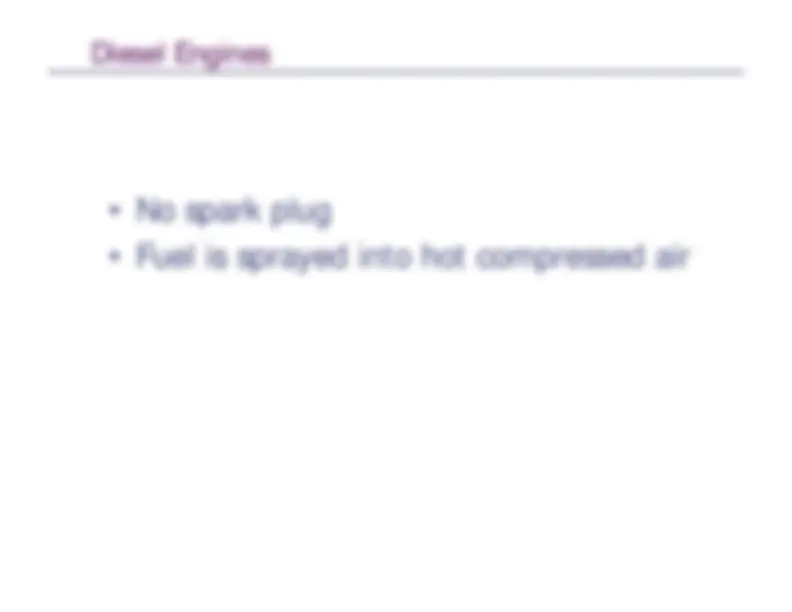
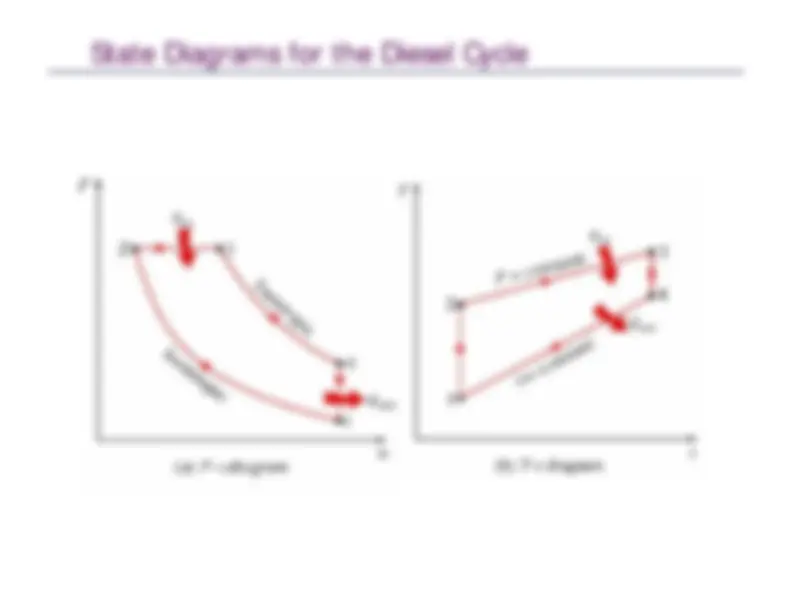
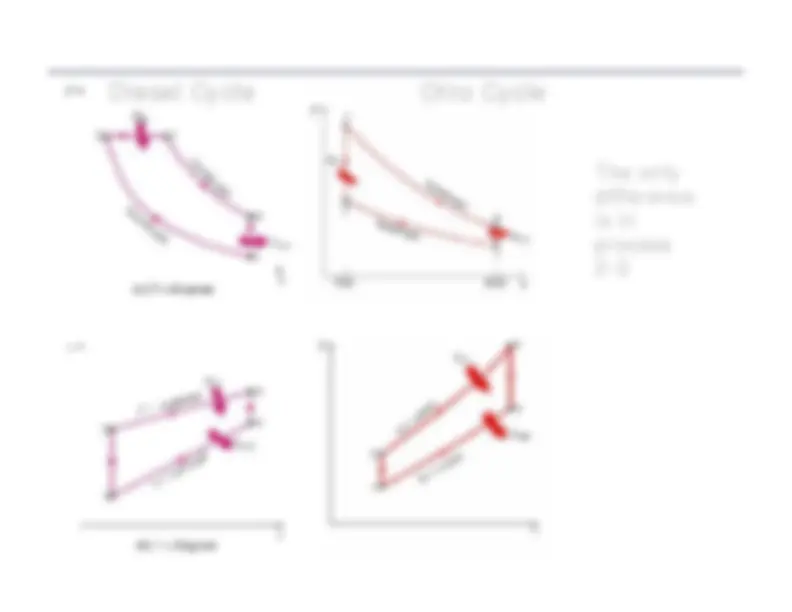
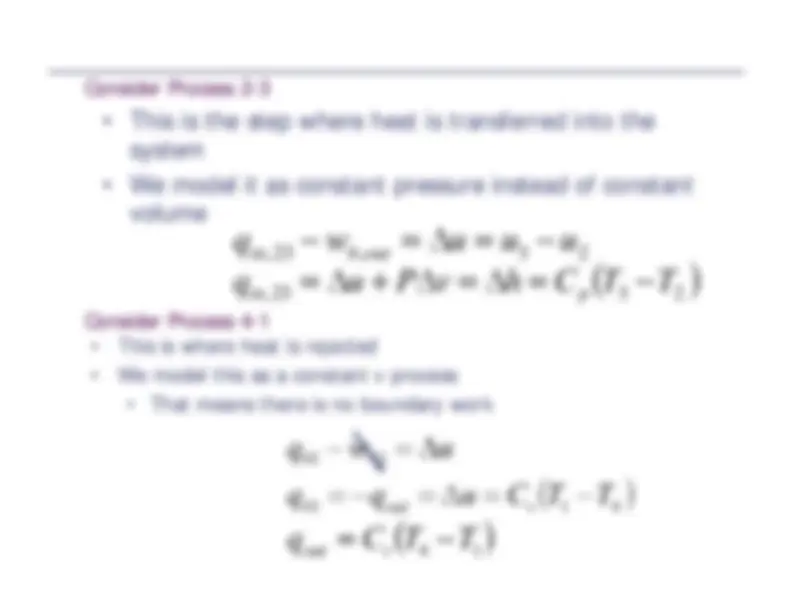
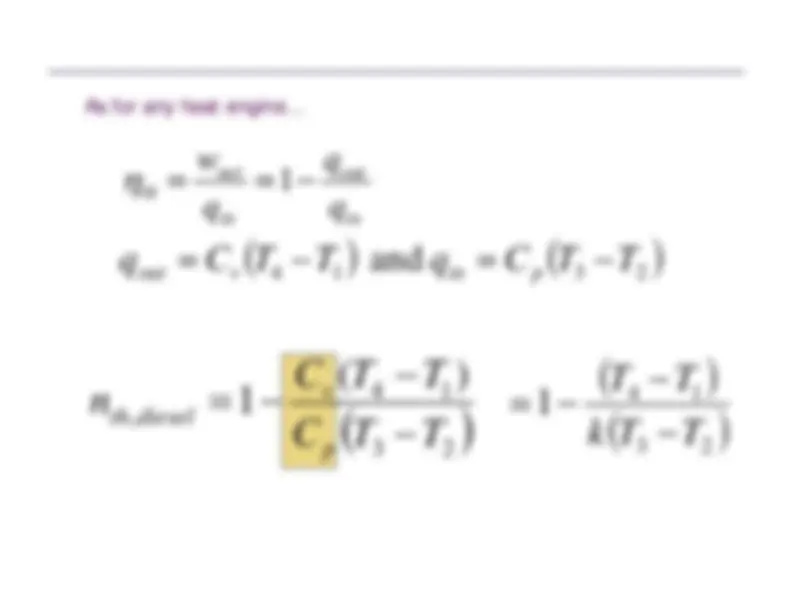

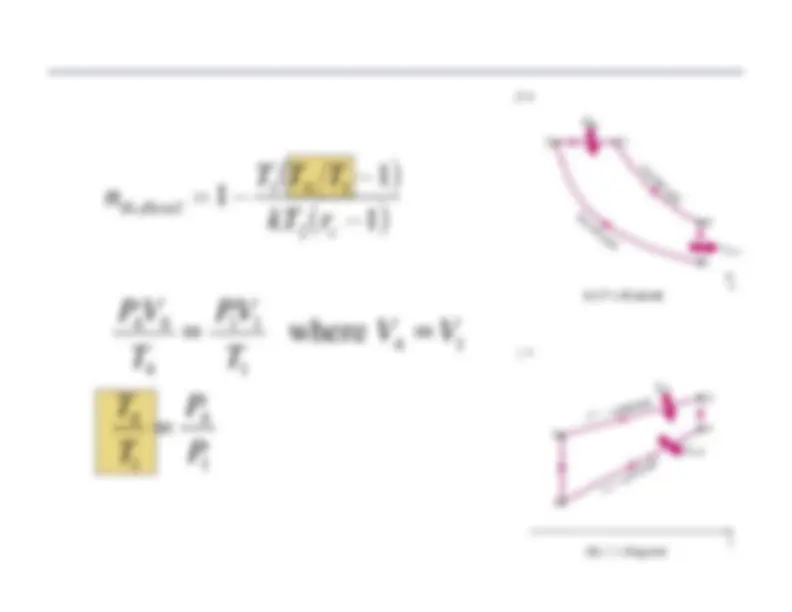
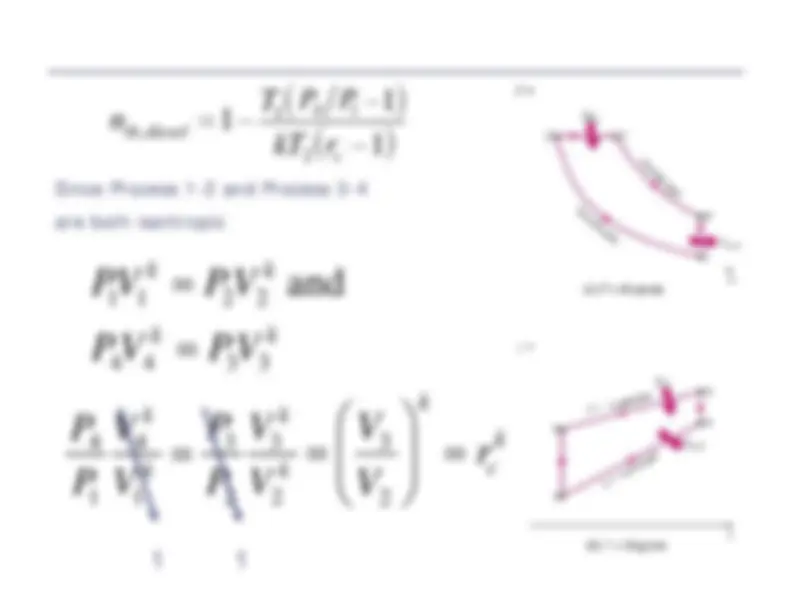
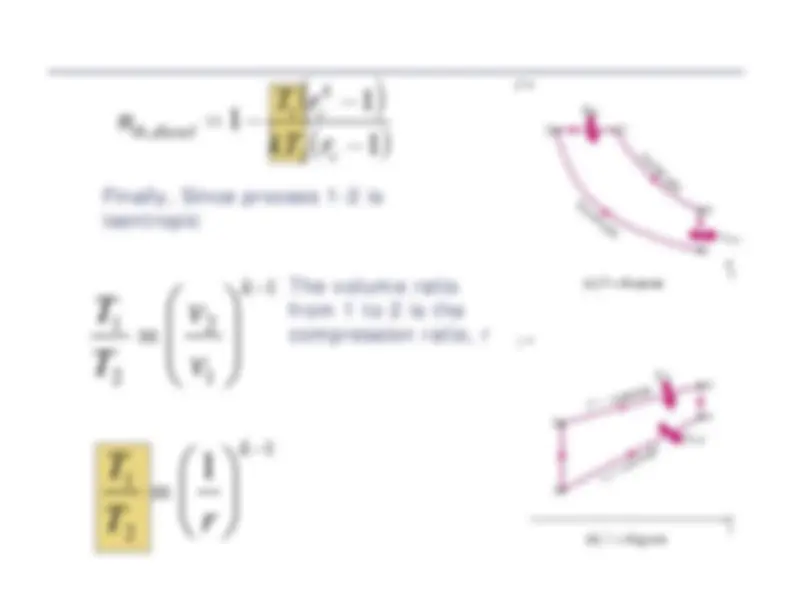
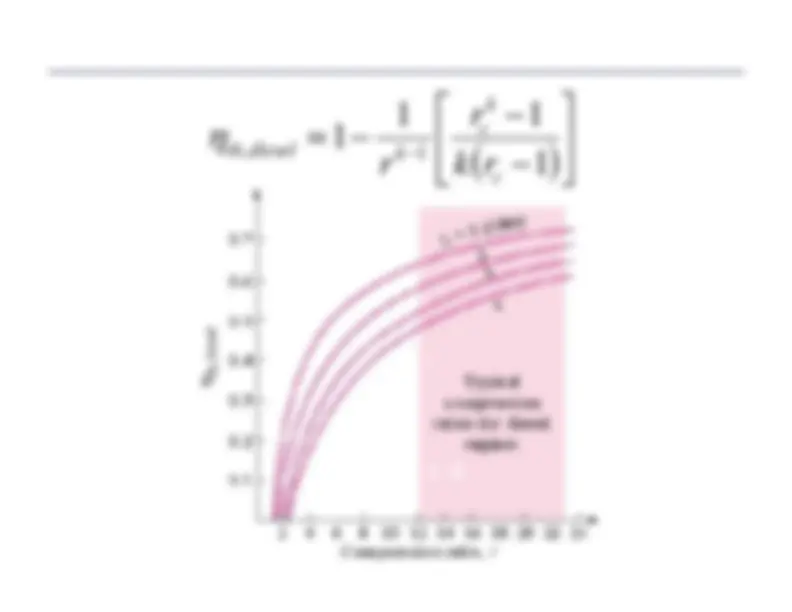
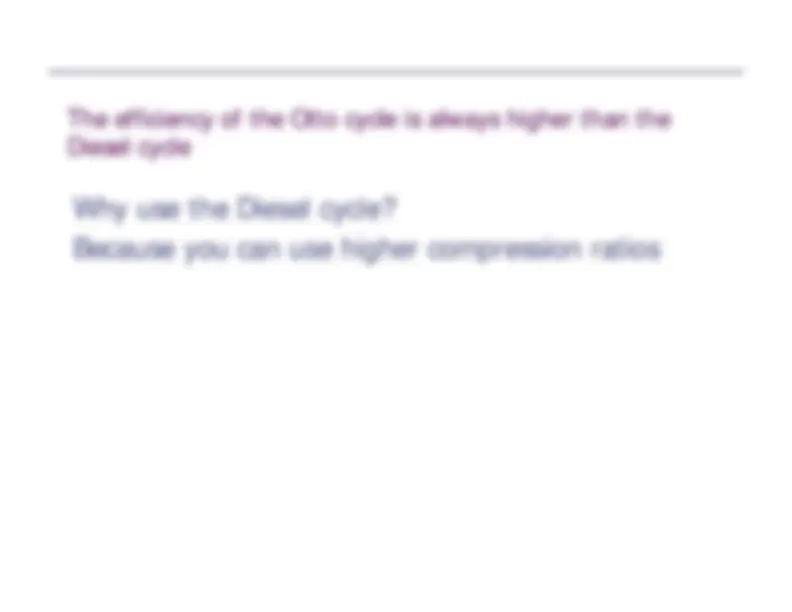


Study with the several resources on Docsity

Earn points by helping other students or get them with a premium plan


Prepare for your exams
Study with the several resources on Docsity

Earn points to download
Earn points by helping other students or get them with a premium plan
Community
Ask the community for help and clear up your study doubts
Discover the best universities in your country according to Docsity users
Free resources
Download our free guides on studying techniques, anxiety management strategies, and thesis advice from Docsity tutors
An overview of various thermodynamic cycles, including power cycles, gas vs. vapor, closed vs. open, and internal vs. external combustion engines. It covers the Otto Cycle, Diesel Cycle, Carnot Cycle, and Air-Standard Assumptions. The document also discusses the differences between the Otto and Carnot cycles and the advantages and disadvantages of using different compression ratios in Otto and Diesel engines.
What you will learn
Typology: Schemes and Mind Maps
Uploaded on 09/12/2022
1 / 29

This page cannot be seen from the preview
Don't miss anything!






















processes
different ways• Power Cycles vs. Refrigeration• Gas vs. Vapor• Closed vs. open• Internal Combustion vs. External Combustion
Ideal Cycles
real systems, so lets start with the onlyideal cycle we’ve studied so far
W
Q
Q-W=
Æ
Q=W
In addition, we know that the efficiency for a
Carnot Cycle is:
th Carnot
L H
,^
A
ir-Standard Assumptions• Air continuously circulates in a closed
loop and behaves as an ideal gas
reversible
addition process from the outside
process
,p
evaluated at room temperature
T
erminology for Reciprocating Devices
r^
V V
V V
BDC TDC
=
=
maxmin
Compression Ratio
v v
1-2 Isentropic Compression2-3 Constant Volume Heat Addition3-4 Isentropic Expansion4-1 Constant Volume Heat Rejection
Apply First Law Closed System to Process 4-1,V = Constant
(^14)
(^41) ,
(^41) ,
(^41) ,
41
(^41) ,
(^41) ,
∫
b
other
net
net
net Q
U
Q
Q
mC
T
T
Q
mC
T
T
mC
T
T
net net
out
v
out
v^
v
, ,^
(
)
(^
)
(^
)
41
41
41
1
4
1
4
4
1
= = −
=
−
= −
−
=
−
∆
η
th Otto
out in
v v
Q Q mC
T
T
mC
T
T
,
(^
)
(^
)
=
−
− −
1 1
4
1
3
2
η
th Otto
T
T
T
T
T T
T
T
T
T
,
(^
)
(^
)
(^
/^
)
(^
/^
)
=
−^
− −
=^
−^
− −
1 1
1 1
4
1
3
2
1
4
1
2
3
2
Æ
Recall processes 1-2 and 3-4 are isentropic, so
1
4 3
3 4
1
1 2
(^21)
T
and
−
−
⎞ ⎟⎟ ⎠
⎞ ⎟⎟ ⎠ ⎛ ⎜⎜ ⎝ =
k
k
v v
T
v v
T T^ v^3
= v
2
and v
4
= v
1
T T
T T
or T T
T T
2 1
3 4
4 1
3 2 = =
Æ
Efficiency of the Otto Cycle vs. Carnot Cycle
Carnot cycle• Heat is added at T
H
L
cycle!!• Heat is added over a range of temperatures• Heat is rejected over a range of temperatures
1
1
2 1
1 2
−
k
k
r
Since process 1-2 is isentropic, T T
η
th Otto
k r
,^
=
−
−
1
1
1
th Otto
,^
(^12)
Æ
Increasing Compression RatioIncreases the Efficiency
Typical CompressionRatios for GasolineEngines
Diesel Engines
State Diagrams for the Diesel Cycle